If you are just getting started in tea or taking a more serious look at tea, one of the areas that you would be looking at are the purchase of tea utensils and accessories.
While it’s often tempting to buy everything you come across, not all of them add value to your enjoyment of tea and not all of them add the same amount of value.
It is often unpopular to have a strong opinion but I’ll go out on a limb and say it- if you are serious about tea or want to coax maximum flavor out of your tea leaves, get a brewing vessel. A dedicated brewing vessel- not a tea-ball or filter bags or some equivalent of it to go with your mug.
Tea-balls and their brethren curtail the unfurling of the tea leaves, necessary for unleashing the full flavor. There is also an issue with the permeability of the material or how much of the tea liquids can interact with the water or the leaves with the water. Also a mug without a lid allows heat to escape which affects the taste of tea.
Brewing Vessels
Hence that is the second item (after tea) on any tea lover’s shopping list- a brewing vessel.
That doesn’t narrow things down though considering the myriad of selections available in every store.
For a first brewing vessel- these are some considerations:
a) Versatility
b) Affordability
c) Ease of use
d) Able to extract quality brew

i) Yixing pots absorb the flavor of teas and get seasoned over time- hence it’s recommended to dedicate a Yixing for a particular type of tea. For the new tea drinker, experimentation is the name of the game.
ii) Genuine Yixing pots are increasingly expensive
Ease of use will lead to many people crossing out the gaiwan from the list although it is actually simpler than most people realize.
Now we are down to probably the most important criteria: extracting a quality brew. If this is not of paramount importance we would stick with tea bags and end of discussion.
In order to coax the maximum flavor from the tea- these are some considerations:
i) Heat retention- vital for oolong and dark teas especially
ii) Space for tea leaves to expand
iii) Size of vessel
Heat Retention
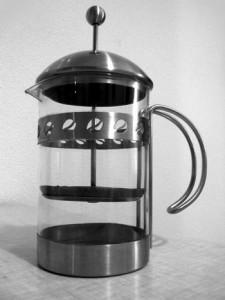
Ceramics, cast iron, porcelain and Yixing clay work well for heat retention but Yixing clay has already been crossed out and cast iron is more suited for boiling water than brewing tea as it stains and imparts new flavors in your brew.
Glass is good to look at but not much on heat retention. Other than green, white and yellow teas which do not require high heat, glass is not recommended.
Then the design comes into play. In the simplest terms a lid would prevent the heat from escaping and allow the tea to brew better. (Note- most green teas are brewed with the lid removed or partially covered as it would ‘yellow’ the tea and result in overcooked taste)
If the vessel is only partially filled with water, the air in contact with the water will cause heat loss as well. Without a sustained level of heat, the extraction of flavors will be limited.
Space
Space is required for the tea leaves to unfurl and release its flavor. As such, placing tea leaves in a brewing filter or canister that is compressed will hamper the taste of the tea.
Size
At the same time, there needs to be a balance. From experience I find that teas brewed in large pot do not have the same intensity and depth. That explains in part why most restaurants teas are mediocre.
For maximum flavor, I would recommend a vessel of 250cc at most, preferably 200cc and below.
The Ideal First Brewing Vessel
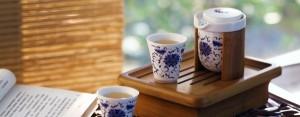
It is distinguished from a gaiwan in that it usually has a spout so that the brewer can easily pour out the tea without tilting the lid for a perfect angle. Clever designers usually incorporate grips or handle so that novices can easily handle it.
In short, this is a gaiwan with training wheels. It helps the novice gains confidence with brewing and handling the vessel, smoothing the learning curve.
Drinking Cups
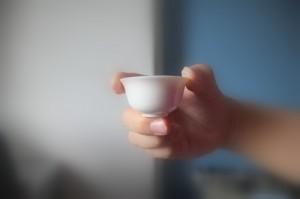
A practical aspect of smaller drinking cups is that you consume it faster and not allow your drink to grow cold. Another aspect is that it is easier to slurp from a smaller cup which is crucial for fuller tea tasting.
As for material ceramics and porcelains cups are recommended as they retain the fragrance of the tea better.
Pitcher
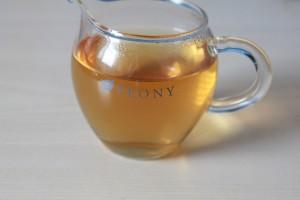
Not as crucial as the first two- it is also known as a fairness cup. When pouring tea out from a vessel, the initial portion will be less concentrated than the later but decanting the tea into a pitcher will distribute the concentration evenly.
You can get around it by filling part of the cup, moving on to another and returning later to ‘manually distribute’ it- in fact in Chaozhou gongfu brewing that’s the norm.
Accoutrements
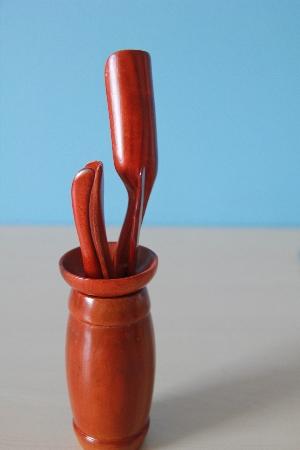
*You can read more about the functions of each- here*
I wrote a post on tea trays- basically you can get round it with a clean, odorless, grease free large bowl or get a hideous metal tray like what I prefer.
Kettle
How water is boiled affects the taste of tea. This warrants an individual post but at the beginning stage, a clean simple electric kettle works well.
Filter
Unless you use Volvic or Evian, most likely your water source is from the tap. Tap water is chlorinated and the chlorine doesn’t bring out the best in the tea.
A simple carbon or ceramic filter works well.
Thereafter
These are just for a starting point- after you are comfortable with your shouzhuawan, you might want to move on to a gaiwan or decide on a Yixing Pot to get.
